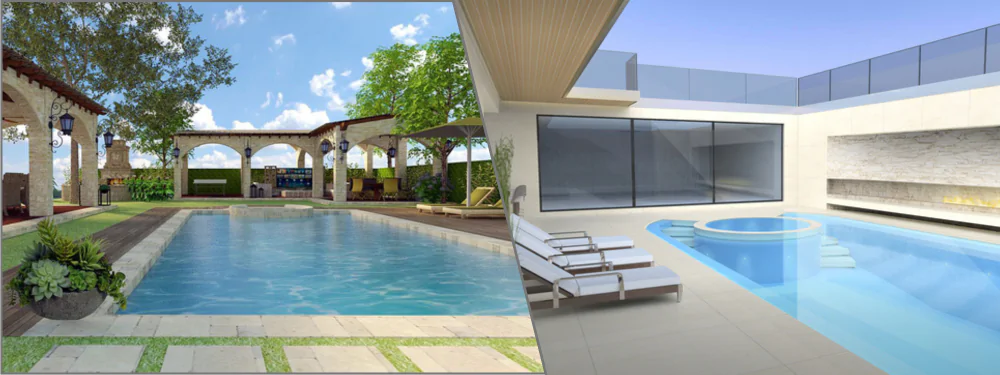The Impact of 3D Pool Renderings on Architectural Visualization
Architectural visualization has undergone a revolutionary transformation with the integration of advanced technologies, and 3D pool renderings have emerged as a powerful tool in this paradigm shift. This article explores the profound impact that 3D pool renderings have had on architectural visualization, offering a unique blend of aesthetic enhancement and practical utility.
Enhancing Design Precision
Traditional architectural drawings often struggle to convey the intricate details and nuances of pool designs. 3D pool renderings, however, bridge this gap by providing a lifelike representation of the envisioned space. These renderings offer a level of design precision that is unparalleled, allowing architects and designers to visualize the interplay of light, space, and materials with remarkable accuracy.
Creating Realistic Environments
One of the key strengths of these tools is their ability to create realistic environments. By incorporating details such as lighting effects, reflections, and surface textures, these renderings bring pool designs to life in a way that 2D drawings cannot. This realism not only aids architects in presenting their concepts more effectively but also enables clients to immerse themselves in the envisioned space before it becomes a physical reality.
Streamlining Communication
Effective communication is at the core of successful architectural projects, and 3D pool renderings have become invaluable. These renderings serve as a universal language, allowing architects, clients, and other stakeholders to communicate and understand design concepts seamlessly. The visual clarity provided by 3D renderings encourages constructive discussions, minimizes misunderstandings, and guarantees that all parties involved are on the same page throughout the design process.
Facilitating Informed Decision-Making
Architectural decisions are often complex and multifaceted, involving considerations of aesthetics, functionality, and budget constraints. 3D pool renderings empower decision-makers by offering a comprehensive view of the proposed design. Clients can make informed decisions about design elements, materials, and spatial configurations, leading to a smoother decision-making process and reducing the likelihood of costly modifications later in the project.
Saving Time and Resources
In the domain of architectural visualization, time is a precious commodity. Traditional methods of creating physical models or 2D drawings can be time-consuming and may not effectively convey the designer’s vision. These tools streamline the design process by providing a quicker and more efficient means of visualizing ideas. This not only saves valuable time but also reduces the consumption of resources associated with multiple design iterations.
Fostering Innovation in Design
The dynamic characteristics of 3D pool renderings inspire architects and designers to challenge the limits of conventional design. The ability to experiment with various elements in a virtual environment allows for exploring innovative concepts and avant-garde designs. This cultivation of a culture steeped in creativity and innovation within the architectural community propels the industry forward, advancing both design aesthetics and functionality.
In conclusion, the impact of 3D pool renderings on architectural visualization is transformative. From enhancing design precision to fostering innovation, these renderings have become a vital tool for architects and designers. The future holds exciting possibilities for those who embrace the potential of 3D pool renderings in shaping the landscapes of tomorrow.

